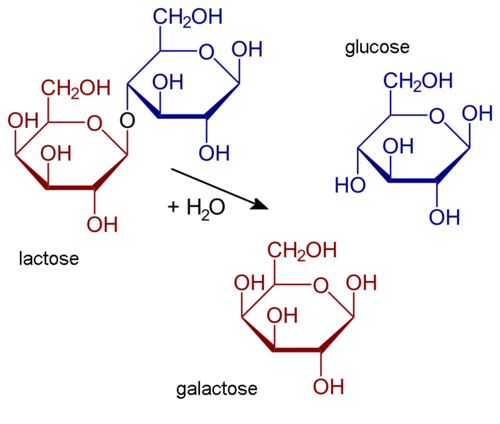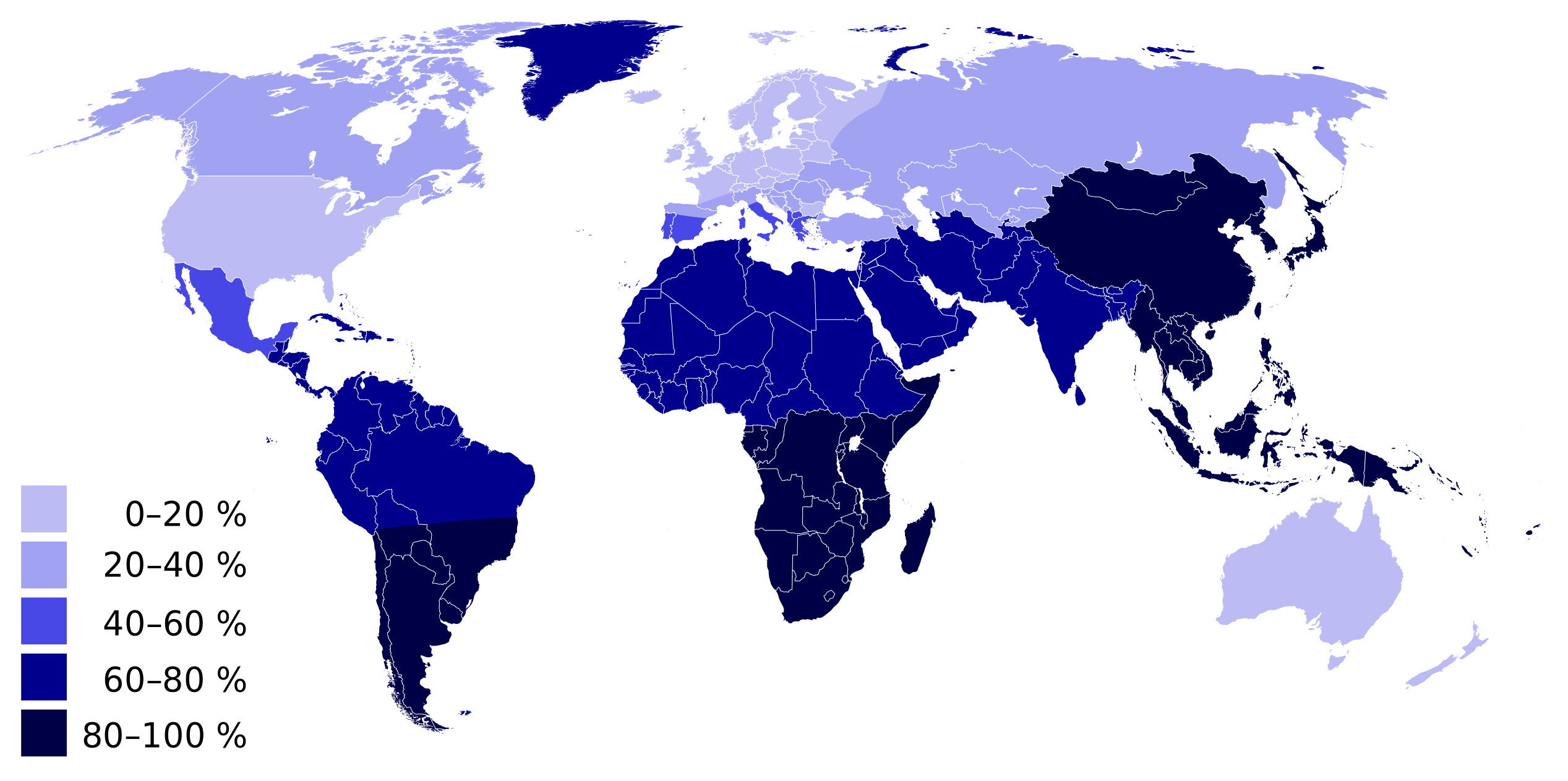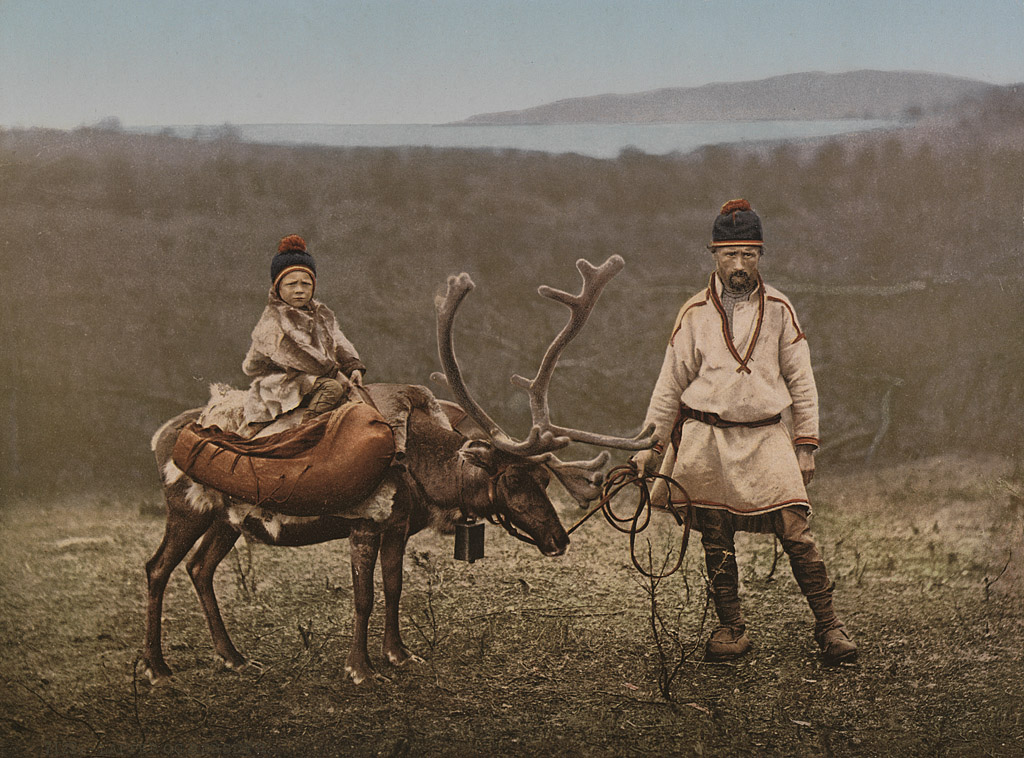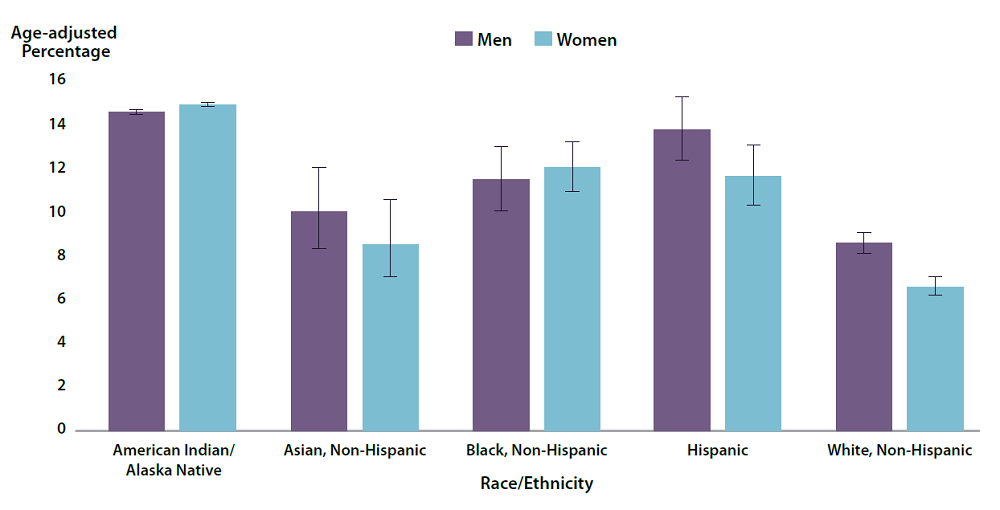How Long Has It Been Since Human Adapted To Drinking Animal Malk
nine.7: Adaptation in Humans
- Page ID
- 22507
Do you remember this "got milk?" slogan from the 1990s? It was used in ads for milk in which celebrities were pictured wearing milk "mustaches." While the purpose of the "got milk?" ads was to sell more milk, there is no denying that drinking milk tin be adept for ane's health. Milk is naturally high in protein and minerals. It can too be low in fat or fifty-fifty fat-free if treated to remove the lipids that naturally occur in milk. Withal, before you achieve for a tall, cold glass of milk, you might want to enquire yourself another question: "got lactase?"

Adaptation to Lactose
Practice you drink milk? Or do y'all avoid drinking milk and consuming milk products because they cause yous discomfort? If the latter is the instance, and so y'all may accept trouble digesting milk.
Milk, Lactose, and Lactase
Milk naturally contains not only proteins and lipids; it also contains carbohydrates. Specifically, milk contains the sugar lactose. Lactose is a disaccharide (two-sugar) compound that consists of ane molecule each of galactose and glucose, as shown in the structural formula below. Lactose makes up between two and 8 percent of milk past weight. The exact amount varies both within and between species.

Lactose in milk must be cleaved downward into its two component sugars to be absorbed by the small intestine. The enzyme lactase is needed for this process, as shown in the diagram below. Human infants are almost ever built-in with the power to synthesize lactase. This allows them to readily digest the lactose in their mother'southward milk (or in infant formula). However, in the majority of infants, lactase synthesis begins to decline at about 2 years of historic period, and less and less lactase is produced throughout babyhood.

Lactose intolerance is the inability of older children and adults to digest lactose in milk. People who are lactose intolerant may be able to beverage small quantities of milk without whatsoever issues, simply if they try to swallow larger amounts, they are likely to suffer adverse effects. For example, they may have abdominal bloating and cramping, flatulence (gas), diarrhea, nausea, and vomiting. The symptoms may occur from half to two hours subsequently milk is consumed and are generally worse when the quantity of milk consumed is greater. The symptoms outcome from the inability of the small intestine to assimilate and absorb lactose, so the lactose is passed on to the large intestine, where normal intestinal bacteria beginning breaking it down through the process of fermentation. This process releases gas and causes other symptoms of lactose intolerance.

Lactose intolerance is actually the original and normal condition of the human species, every bit information technology is of all other mammalian species. Early humans were hunter-gatherers that subsisted on wild plant and animal foods. The creature foods may take included meat and eggs but did non include milk because animals had not been domesticated. Therefore, beyond the weaning period, milk was not available for people to drink in early human populations. It makes good biological sense to end synthesizing an enzyme that the body does non need. After a young child is weaned, it is a waste of materials and energy to go along producing lactase when milk is no longer likely to be consumed.
Overall, an estimated 60 percent of the globe'southward adult human population is thought to exist lactose intolerant today. You can see the geographic distribution of modern homo lactose intolerance on the map in Figure \(\PageIndex{4}\). Lactose intolerance (dark blueish) approaches 100 percent in populations throughout southern South America, southern Africa, and Due east and Southeast Asia.
Lactose intolerance is not considered to be a medical problem considering its symptoms can be avoided by not consuming milk or milk products. Dietary command of lactose intolerance may be a thing of trial and error, however, considering different people may be able to consume different quantities of milk before symptoms occur. If you lot are lactose intolerant, be aware that depression-fat and fat-free milk may contain somewhat more lactose than full-fat milk considering the former oft have added milk solids that are relatively loftier in lactose.
Lactase Persistence

Lactase persistence is the opposite of lactose intolerance. People who are lactase persistent continue to produce the enzyme lactase beyond infancy and generally throughout life. As a consequence, they are able to assimilate lactose and drink milk at older ages without agin furnishings. The map higher up can also be read to show where lactase persistence occurs today. Populations with a low pct of lactose intolerance (including Due north Americans of European descent) take high percentages of lactase-persistent people.
Lactase persistence is a uniquely human trait that is not constitute in any other mammalian species. Why did lactase persistence evolve in humans? When some human being populations began domesticating and keeping herds of animals, creature milk became a potential source of food. Animals such as cows, sheep, goats, camels, and fifty-fifty reindeer (Figure \(\PageIndex{5}\)) can exist kept for their milk. These kinds of animal milk too contain lactose, and then natural choice would be potent for whatever individuals who kept producing lactase beyond infancy and could make utilise of this nutritious nutrient. Eventually, the trait of lactase persistence would increase in frequency and come to be the predominant trait in dairying populations.
It is likely that lactase persistence occurs every bit a result of both genes and the surroundings. Some people inherit genes that help them keep producing lactase after infancy. Geneticists recollect that several dissimilar mutations for lactase persistence arose independently in different populations inside the last 10,000 years. Part of lactase persistence may be due to continued exposure to milk in the nutrition in babyhood and adulthood. In other words, a person may be genetically predisposed to synthesize lactase at older ages because of a mutation simply may demand the continued stimulation of milk drinking to keep producing lactase.
Thrifty Gene or Drifty Cistron?
Besides variation in lactase persistence, human being populations may vary in how efficiently they use calories in the foods they consume. People in some populations seem to be able to go by on quantities of nutrient that would be inadequate for others, so they tend to gain weight easily. What explains these differences in people?
Thrifty Factor Hypothesis
In 1962, human geneticist James Neel proposed the thrifty factor hypothesis. According to this hypothesis, and so-called "thrifty genes" evolved in some man populations because they allowed people to get by on fewer calories and store the rest as body fat when nutrient was plentiful. Co-ordinate to Neel's hypothesis, thrifty genes would take increased in frequency through natural choice because they would assist people survive during times of dearth. People with the genes would be fatter and able to rely on their stored body fatty for calories when food was scarce.
Such thrifty genes would have been advantageous in early human populations of hunter-gathers if food scarcity was recurrent stress. However, in modernistic times, when most people have access to enough food year-circular, thrifty genes would no longer exist advantageous. In fact, nether conditions of plentiful nutrient, having thrifty genes would predispose people to proceeds weight and develop obesity. They would also tend to develop a chronic disease associated with obesity, particularly type II diabetes. Diabetes mellitus is a disease that occurs when there are problems with the pancreatic hormone insulin, which usually helps cells take upwardly glucose from the claret and controls claret glucose levels. In type Ii diabetes, body cells become relatively resistant to insulin, leading to high blood glucose. This causes symptoms including excessive thirst and urination. Without handling, diabetes can pb to serious consequences, such every bit blindness and kidney failure.
Neel proposed his thrifty factor hypothesis not on the basis of genetic evidence for thrifty genes but as a possible answer to the mystery of why genes that seem to promote diabetes have not been naturally selected out of some populations. The mystery arose from observations that sure populations — such as S Pacific Islanders, sub-Saharan Africans, and southwestern Native Americans — developed high levels of obesity and diabetes after they abandoned traditional diets and adopted Western diets. This is reflected in figure \(\PageIndex{6}\) which shows the 2017-2018 rates of diabetes in the United states of america. Prevalence of diagnosed diabetes was highest among American Indians/Alaska Natives (xiv.7%), people of Hispanic origin (12.5%), and not-Hispanic blacks (11.7%), followed by non-Hispanic Asians (9.ii%) and non-Hispanic whites (7.5%). An of import note for studies based on race: any 2 humans have 99.9% similar Dna. The 0.1% difference causes variation in concrete traits that humans have used to construct races. Biologically, all humans belong to but 1 race. Different traits are selected in different environments due to natural pick and genetic drift.

Assessing the Thrifty Gene Hypothesis
One of the assumptions underlying the thrifty cistron hypothesis is that human being populations that recently developed high rates of obesity and diabetes after Western contact had a long history of recurrent dearth. Anthropological evidence contradicts this assumption for at to the lowest degree some of the populations in question. For instance, Due south Pacific Islanders have long lived in a "land of enough," with lush tropical forests year-round on islands surrounded past warm waters full of fish. Another assumption underlying the thrifty cistron hypothesis is that hunter-gatherer people became significantly fatter during periods of plenty. Once again, at that place is little or no bear witness that hunter-gatherers traditionally deposited large fatty stores when food was readily available.
Some geneticists have searched directly for so-called thrifty genes. Studies have revealed many genes with pocket-size effects associated with obesity or diabetes. Even so, these genes can explicate but a few percent points of the total population variation in obesity or diabetes.
The Drifty Factor and Other Hypotheses
Given the lack of evidence for the thrifty gene hypothesis, several researchers accept suggested alternative hypotheses to explain population variation in obesity and diabetes. I hypothesis posits that susceptibility to obesity and diabetes may be a side upshot of heat accommodation. Co-ordinate to this idea, some populations evolved lower metabolic rates as an adaptation to oestrus stress, because lower metabolic rates reduced the corporeality of estrus that the torso produced. The lower metabolic rates too predisposed people to proceeds excess weight and develop obesity and diabetes.
A thrifty phenotype hypothesis has also been proposed. This hypothesis suggests that individuals who accept inadequate nutrition during fetal development might develop an insulin-resistant phenotype. The insulin-resistant phenotype would supposedly set these individuals for a life of famine, based on the environment inside the womb. In a famine-costless environment, notwithstanding, the thrifty phenotype would lead to the evolution of diabetes.
The most recent alternative to the thrifty gene hypothesis is the drifty gene hypothesis proposed past biologist John Speakman. He argues that genes protecting humans from obesity were under potent natural option pressure for a very long menstruum of time while human ancestors were subject to the risk of predation. Co-ordinate to this view, being able to outrun predators would accept been an important cistron in selecting against fatness. When the hazard of predation was lessened, perhaps as early as two million years ago, genes keeping fatness in check would no longer be selected for. Without selective pressure for these genes, their frequencies could change randomly due to genetic drift. In some populations, by chance, frequencies of the genes could decrease to relatively depression levels, whereas in other populations the frequencies could be much higher.
Myth: Lactose intolerance is an allergy to milk.
Reality: Lactose intolerance is non an allergy considering it is non an immune system response. Rather, it is a sensitivity to milk that is caused by lactase deficiency so the sugar in milk cannot be digested. Milk allergy does exist, merely it is a different status that occurs in only about iv percent of people. It results when milk proteins (not milk carbohydrate) trigger an immune reaction. How tin you determine whether you have lactose intolerance or a milk allergy? If you can drink lactose-free milk without symptoms, it is likely that you are lactose intolerant and not allergic to milk. Still, if lactose-free milk likewise produces symptoms, it is likely that you accept a milk allergy. Note that it is possible to take both conditions.
Myth: If you are lactose intolerant, you will never be able to potable milk or swallow other dairy products without suffering adverse concrete symptoms.
Reality: Lactose intolerance does non hateful that consuming milk and other dairy products is out of the question. Also lactose-complimentary milk, which is widely available, many dairy products take relatively depression levels of lactose, so you lot may be able to swallow at to the lowest degree minor amounts of them without discomfort. For example, y'all may be able to consume milk in the form of yogurt without whatever problems because the bacteria in yogurt produce lactase that breaks down the lactose. Greek yogurt may be your best bet because it is lower in lactose, to brainstorm with. Aged cheeses also tend to have relatively depression levels of lactose because of the cheese-making process. Finally, by gradually adding milk or milk products to your nutrition, you may be able to increase your tolerance to lactose.
Review
- Distinguish between the terms lactose and lactase.
- What is lactose intolerance, and what percentage of all people have it?
- Where and why did lactase persistence evolve?
- What is the thrifty gene hypothesis?
- How well is the thrifty gene hypothesis supported past evidence?
- Describe an culling hypothesis to the thrifty factor hypothesis.
- Do y'all think that a lack of exposure to dairy products might touch on a person'southward lactase level? Why or why not?
- Draw an experiment you lot would want to do or information you would want to analyze that would help to examination the thrifty phenotype hypothesis. Recall, y'all are studying people, so be sure it is ethical! Discuss possible misreckoning factors that you should control for in this report, or that might affect the interpretation of your results.
- Explain the relationship between insulin, claret glucose, and type II diabetes.
- True or False. Lactose persistence evolved more than recently than lactose intolerance.
- Truthful or Faux. The drifty gene hypothesis is dependent on the assumption that fatter people cannot run as effectively equally thinner people.
- What two ethnic groups in the U.S. have a peculiarly high charge per unit of decease from diabetes? What other types of data would you want to observe to determine whether certain ethnic groups are more susceptible to diabetes? Explain why this additional data would exist helpful.
Explore More
Source: https://bio.libretexts.org/Courses/Butte_College/BC:_BIOL_2_-_Introduction_to_Human_Biology_%28Grewal%29/Text/09:_Biological_Evolution/9.7:_Adaptation_in_Humans
Posted by: jorgensenbouselt.blogspot.com

0 Response to "How Long Has It Been Since Human Adapted To Drinking Animal Malk"
Post a Comment